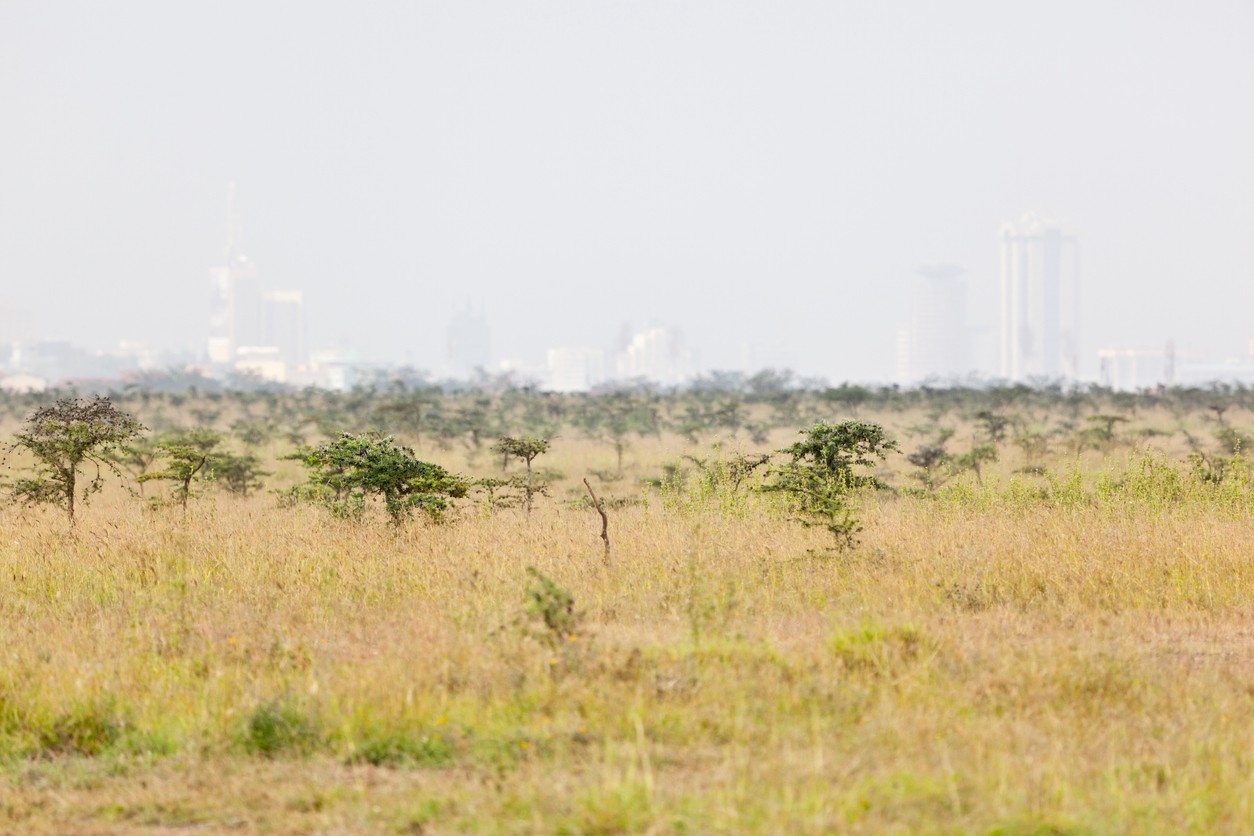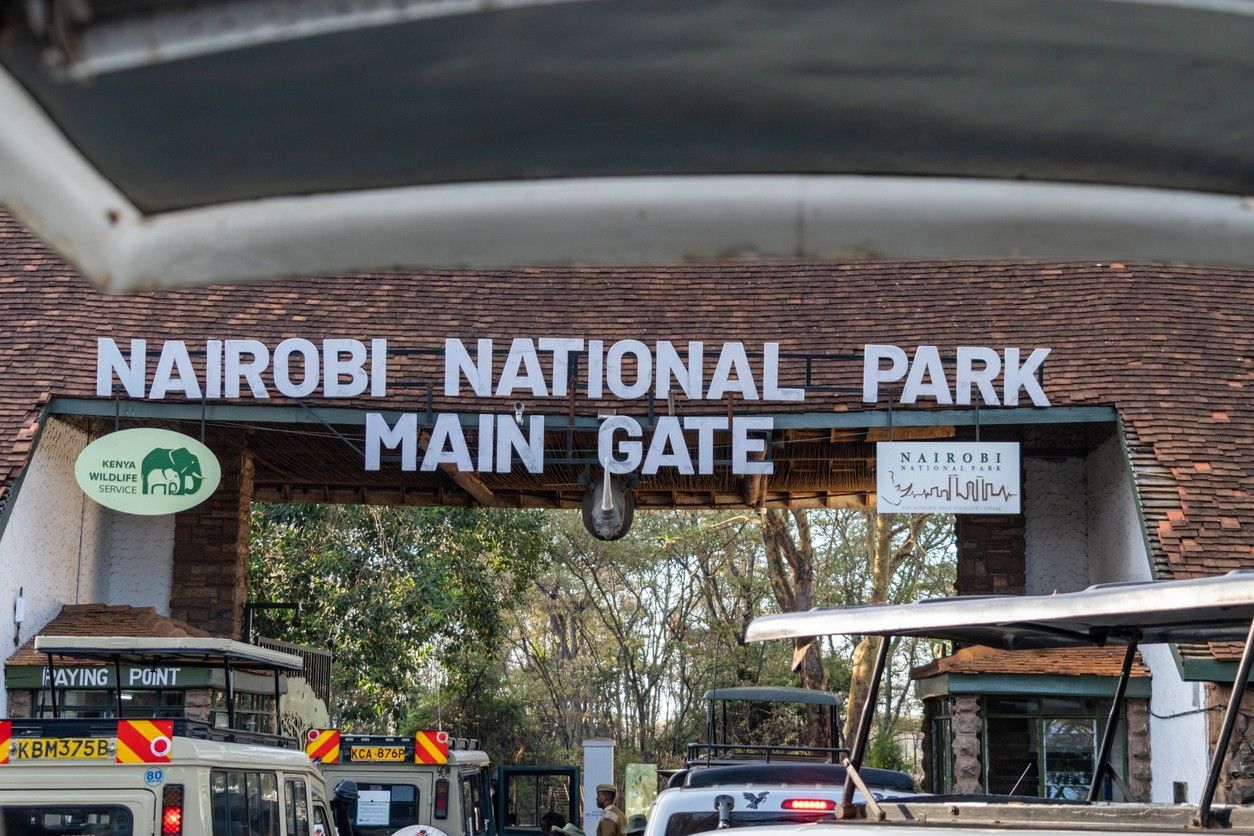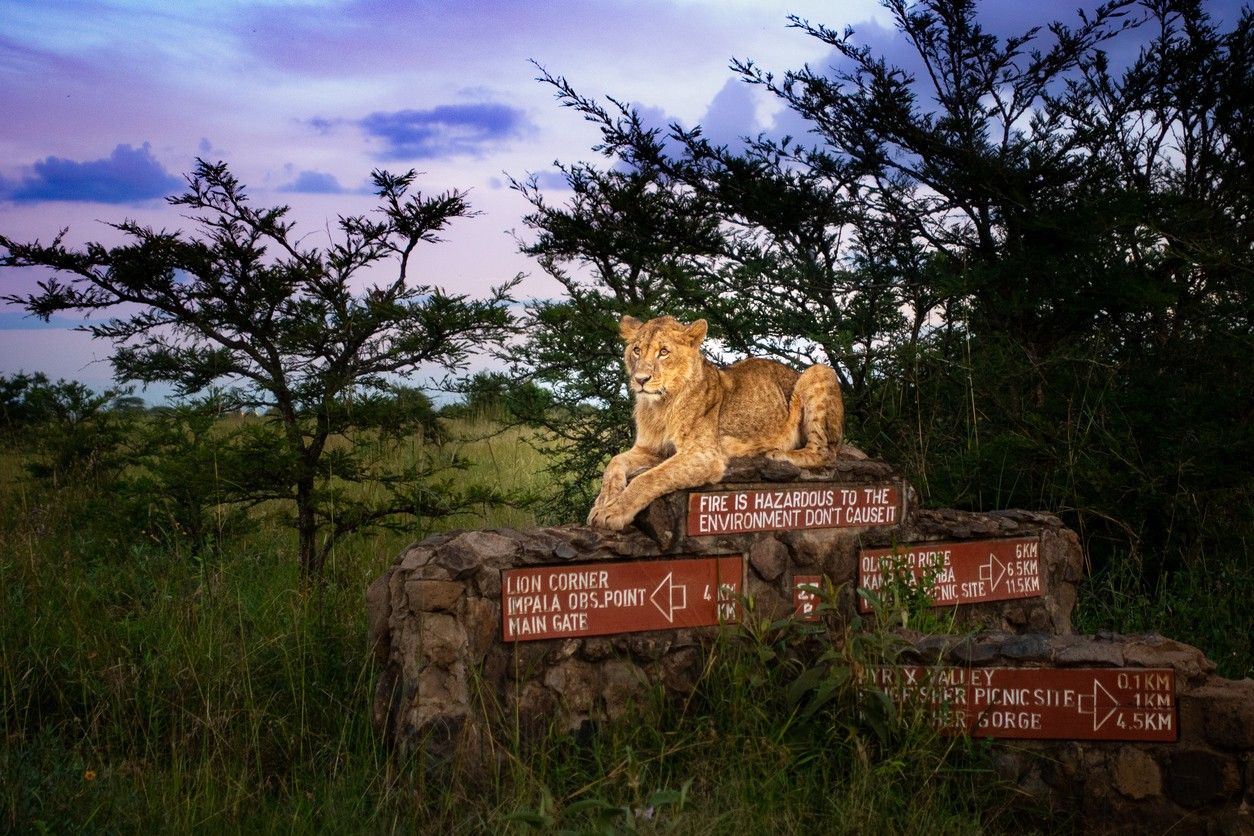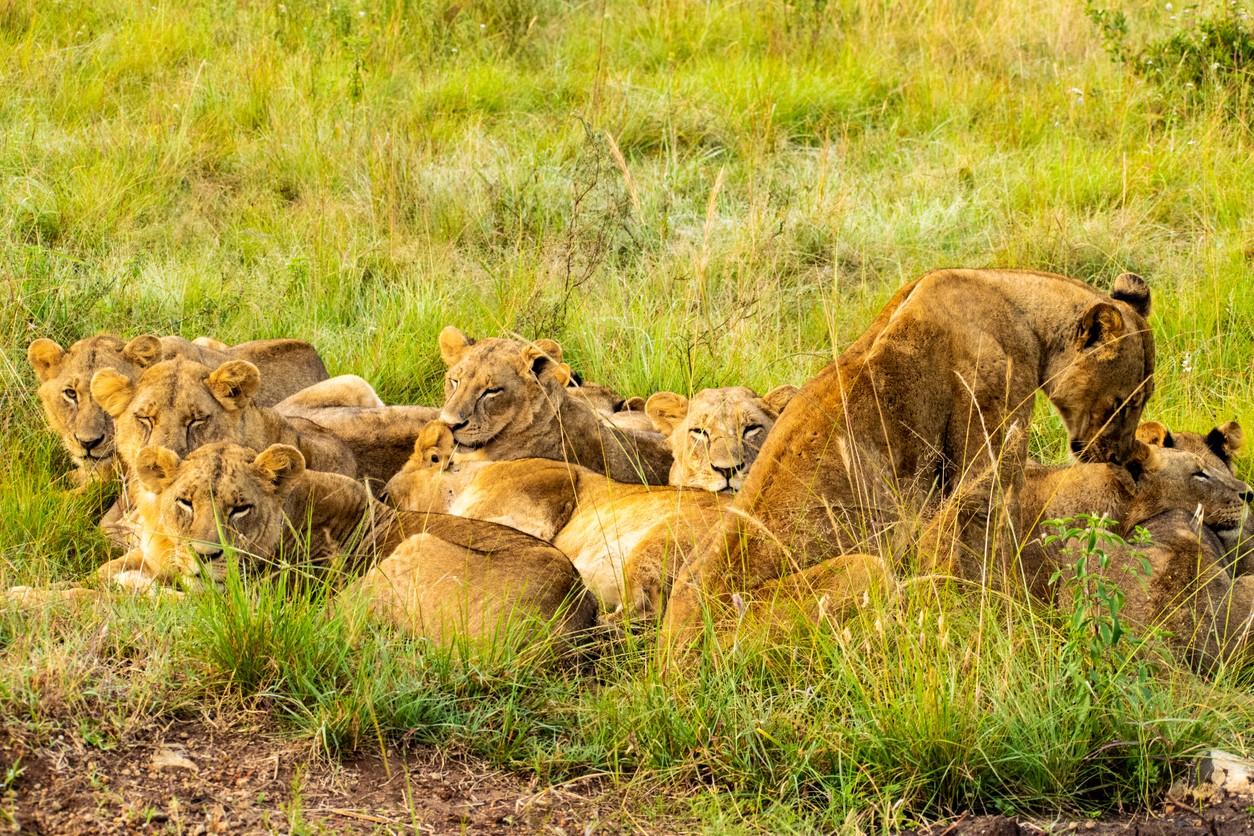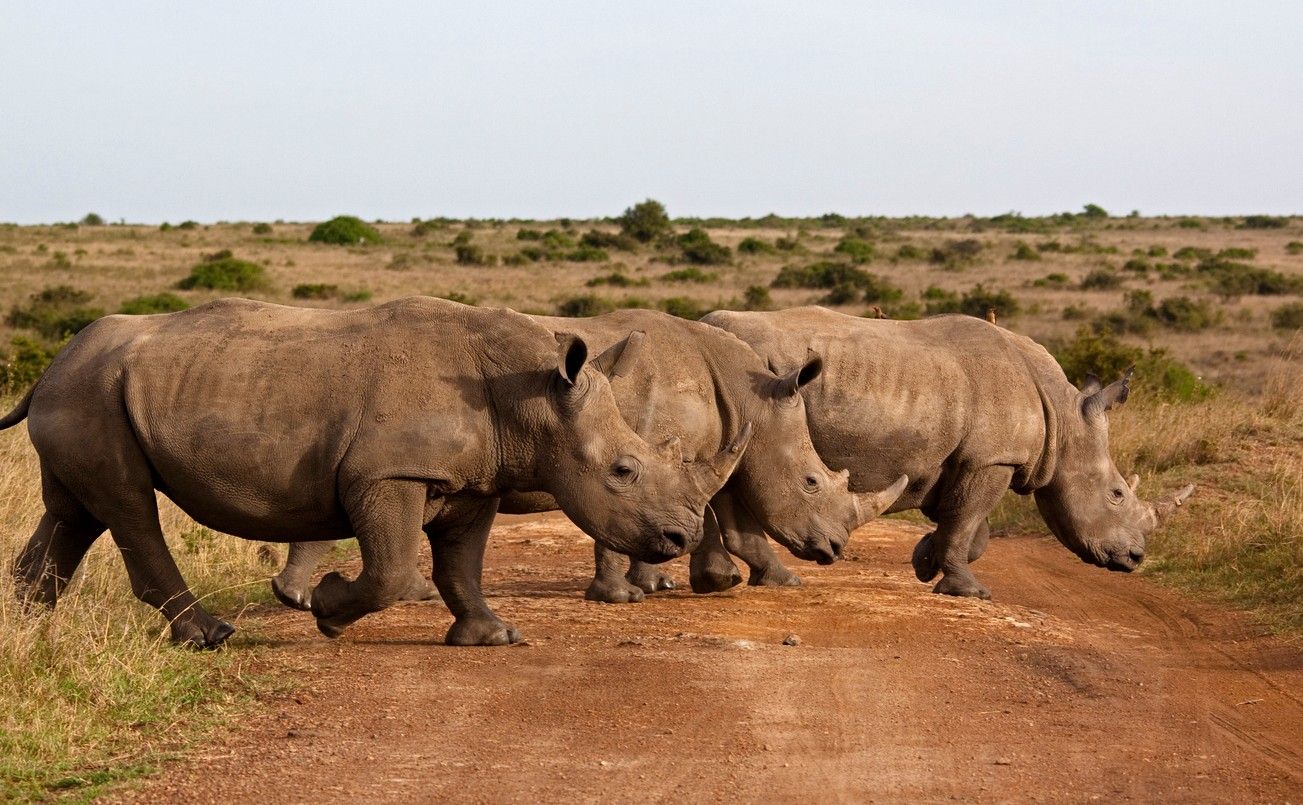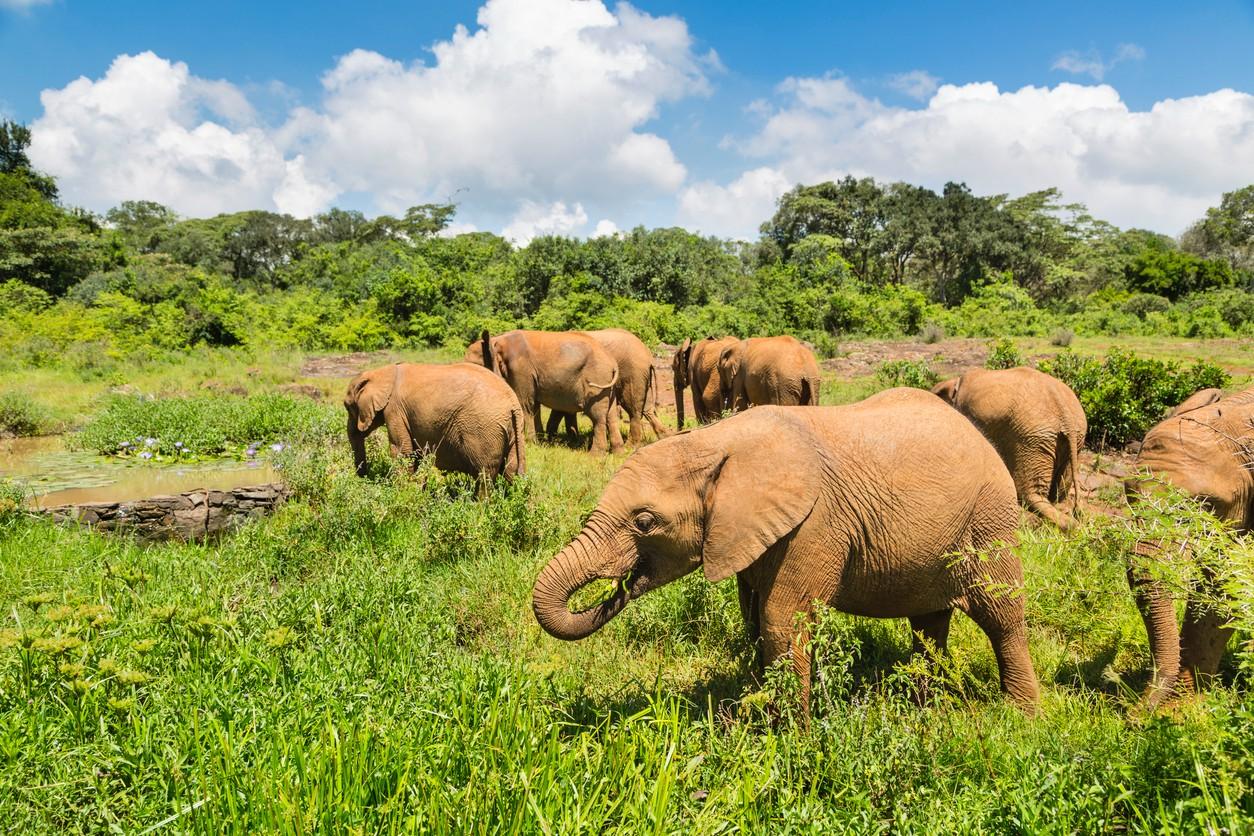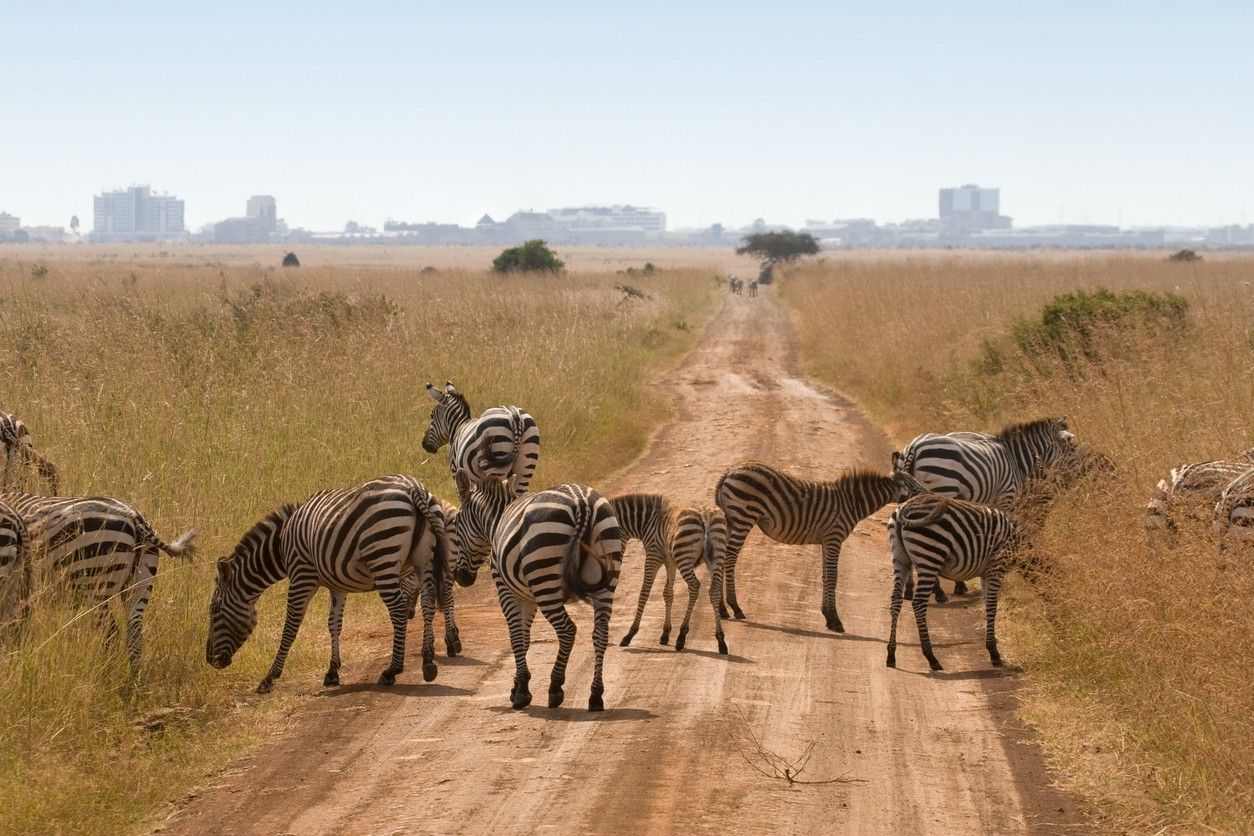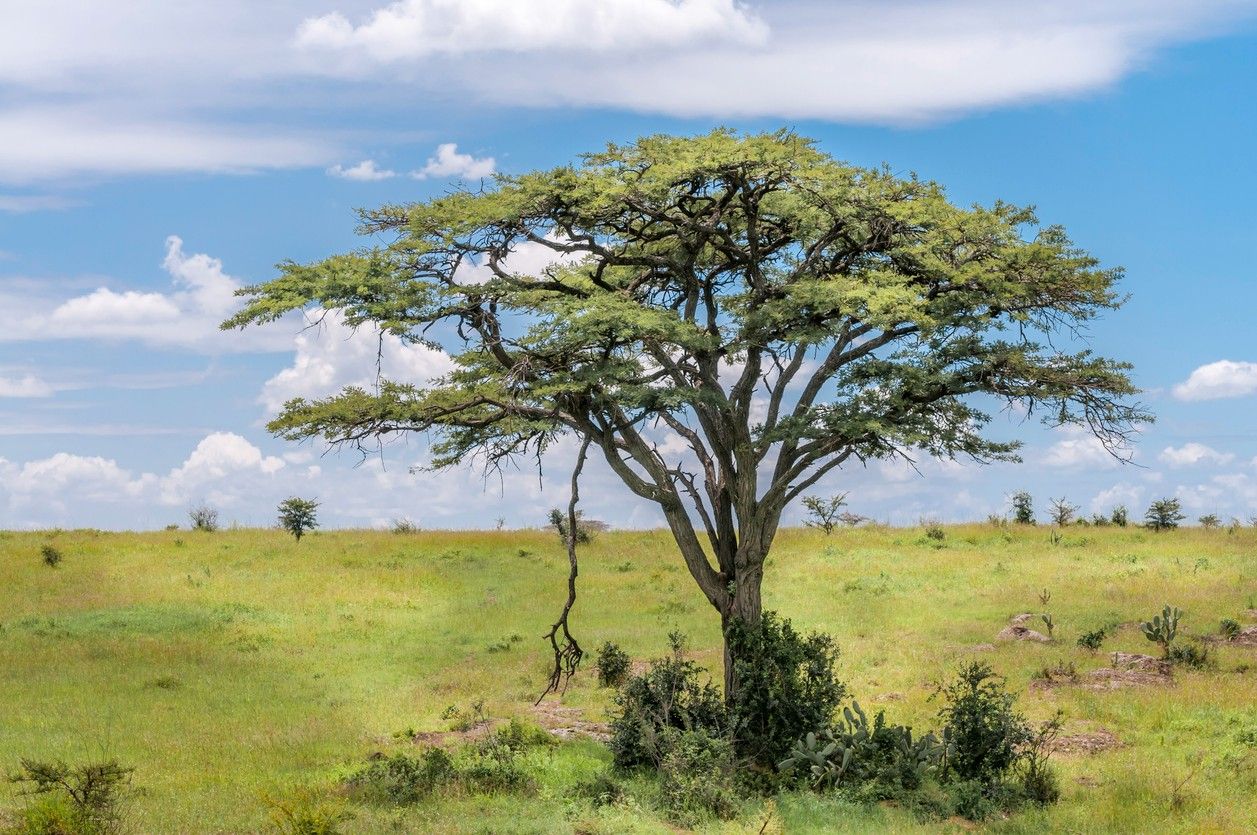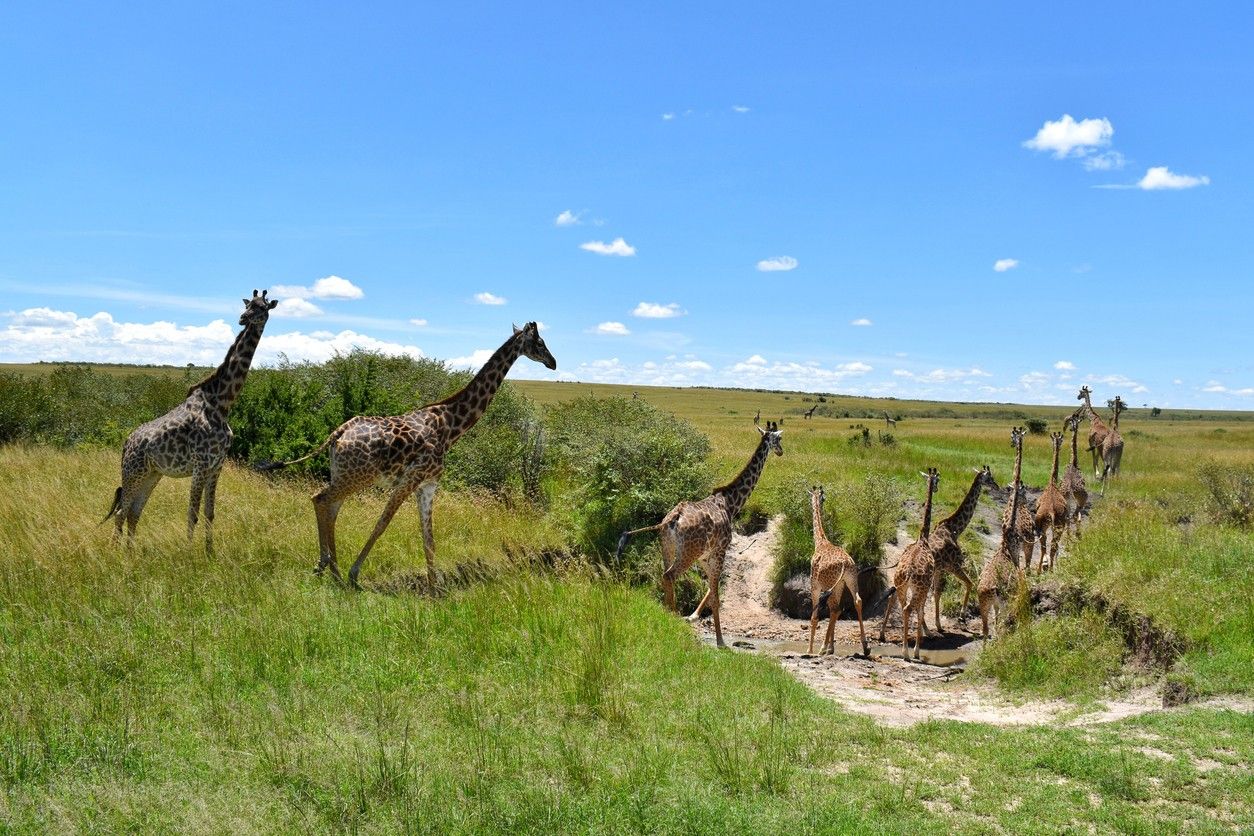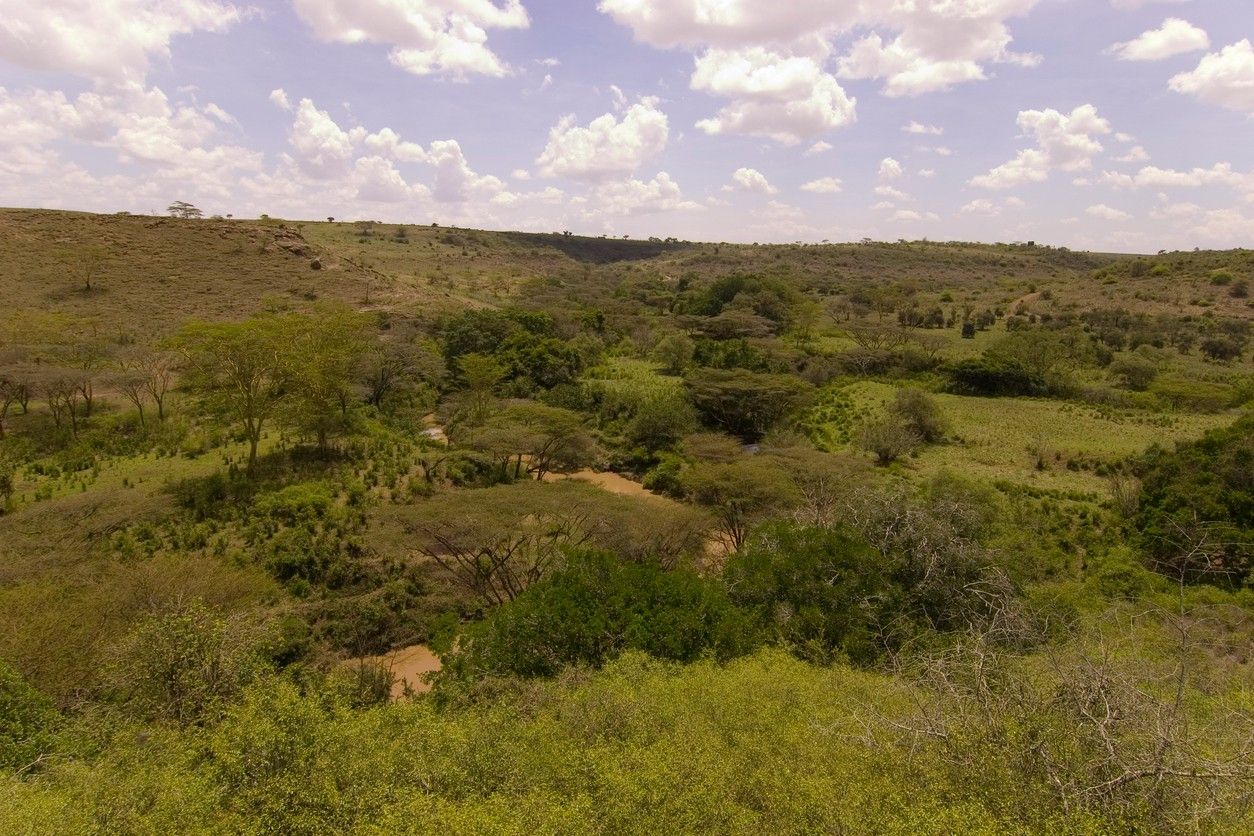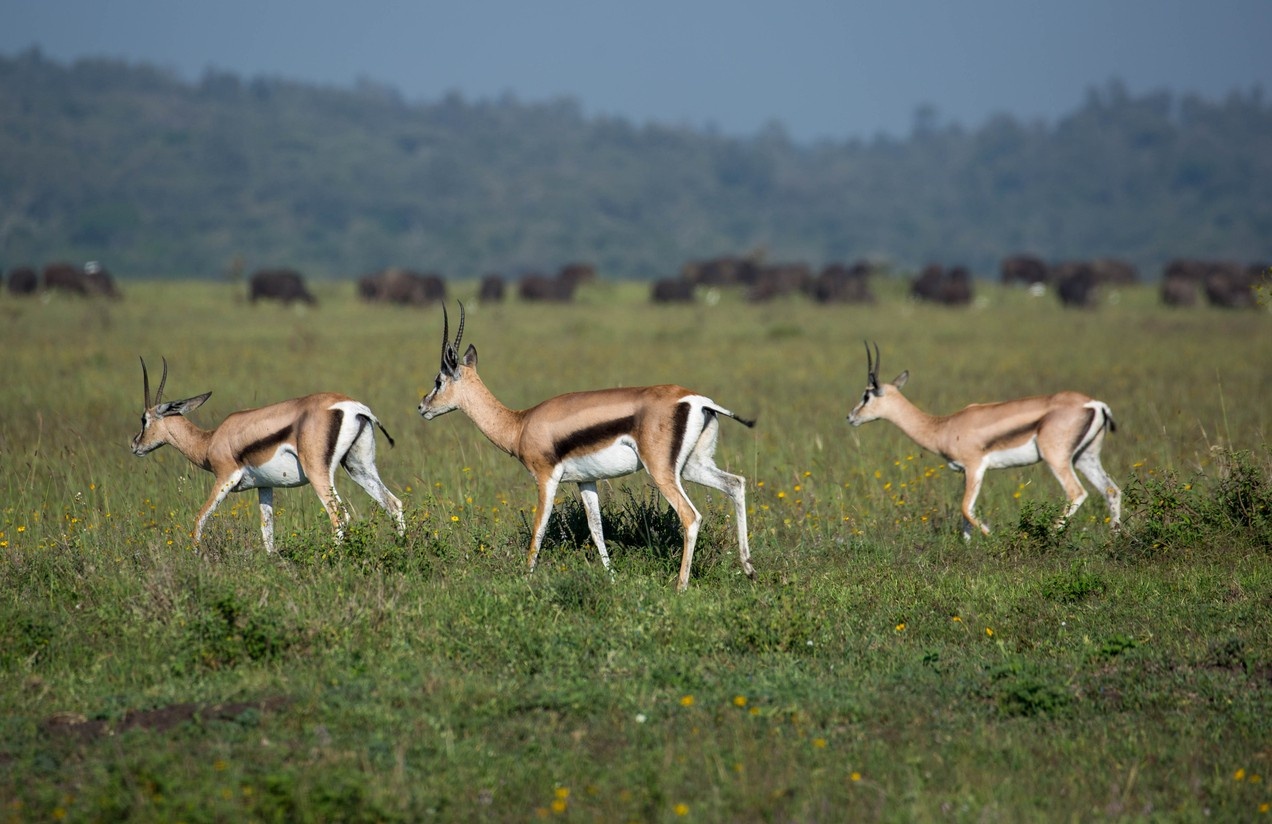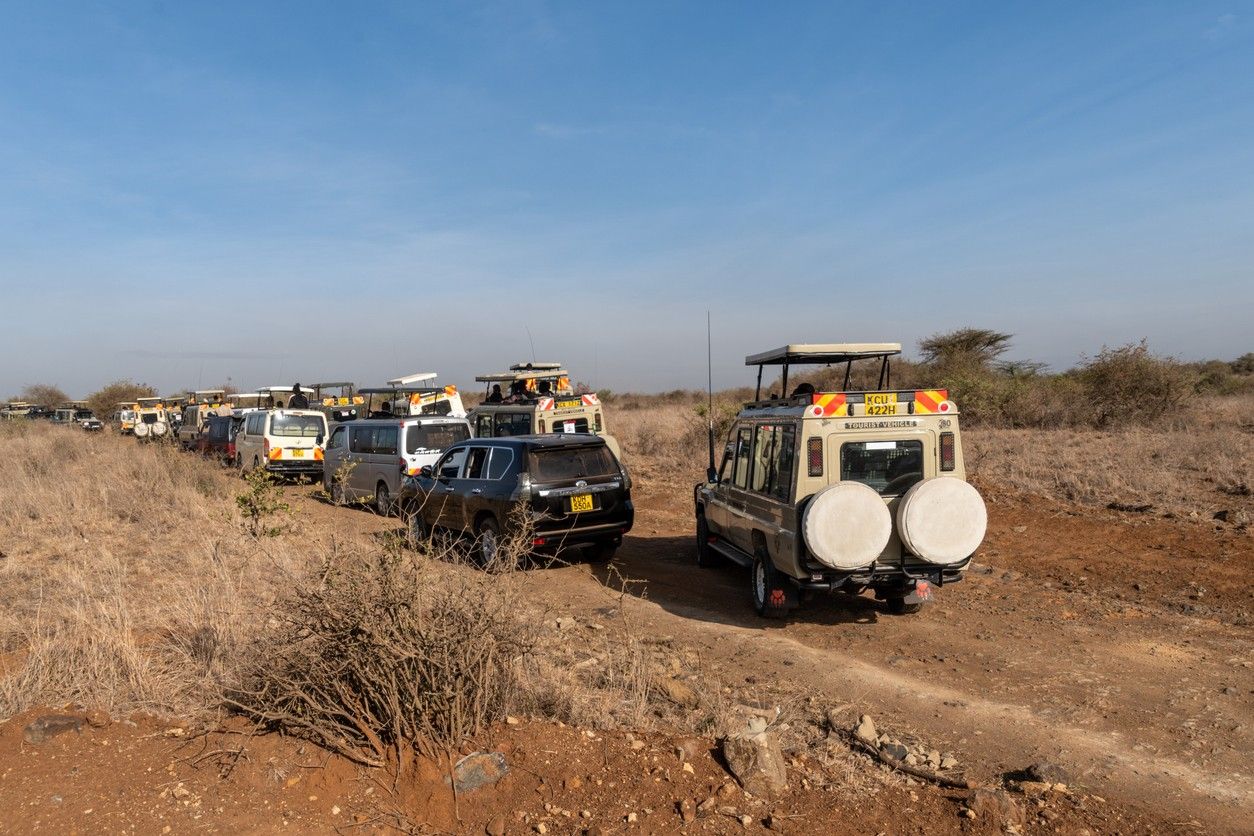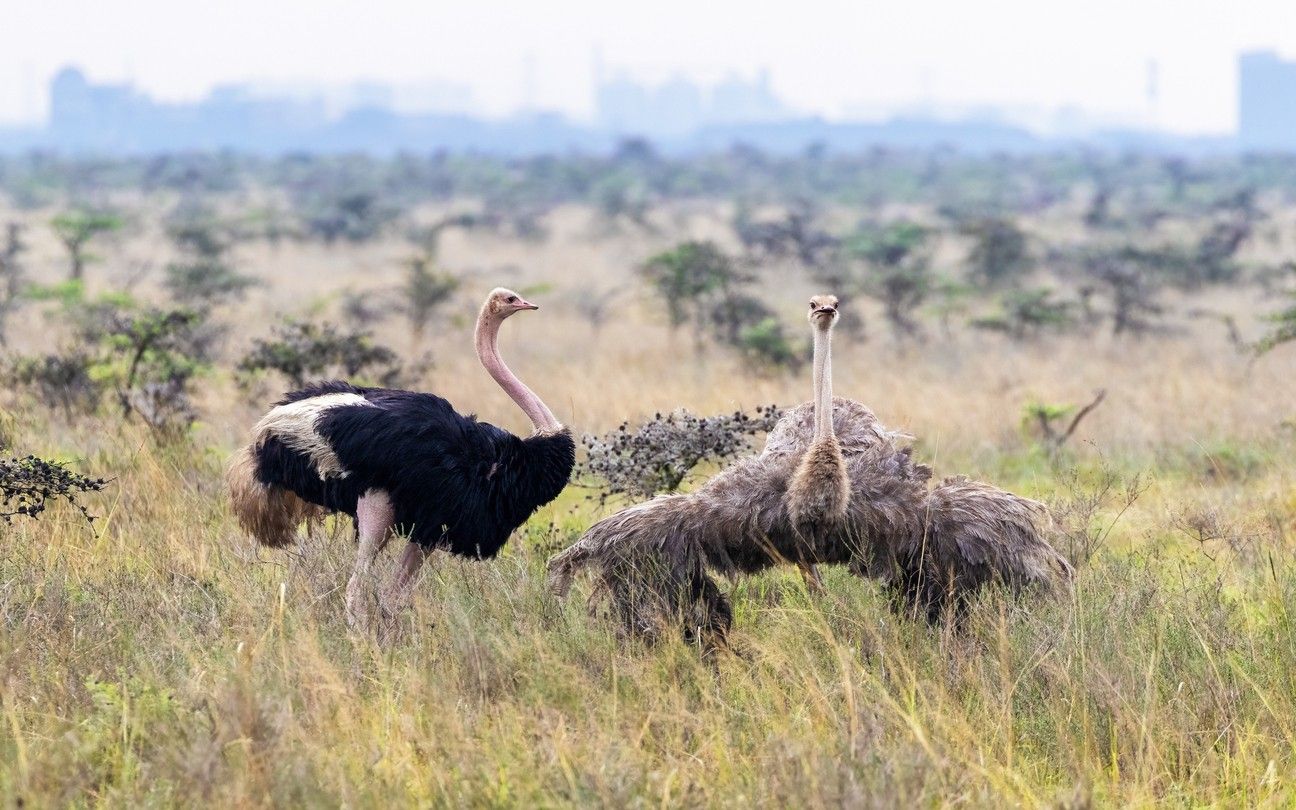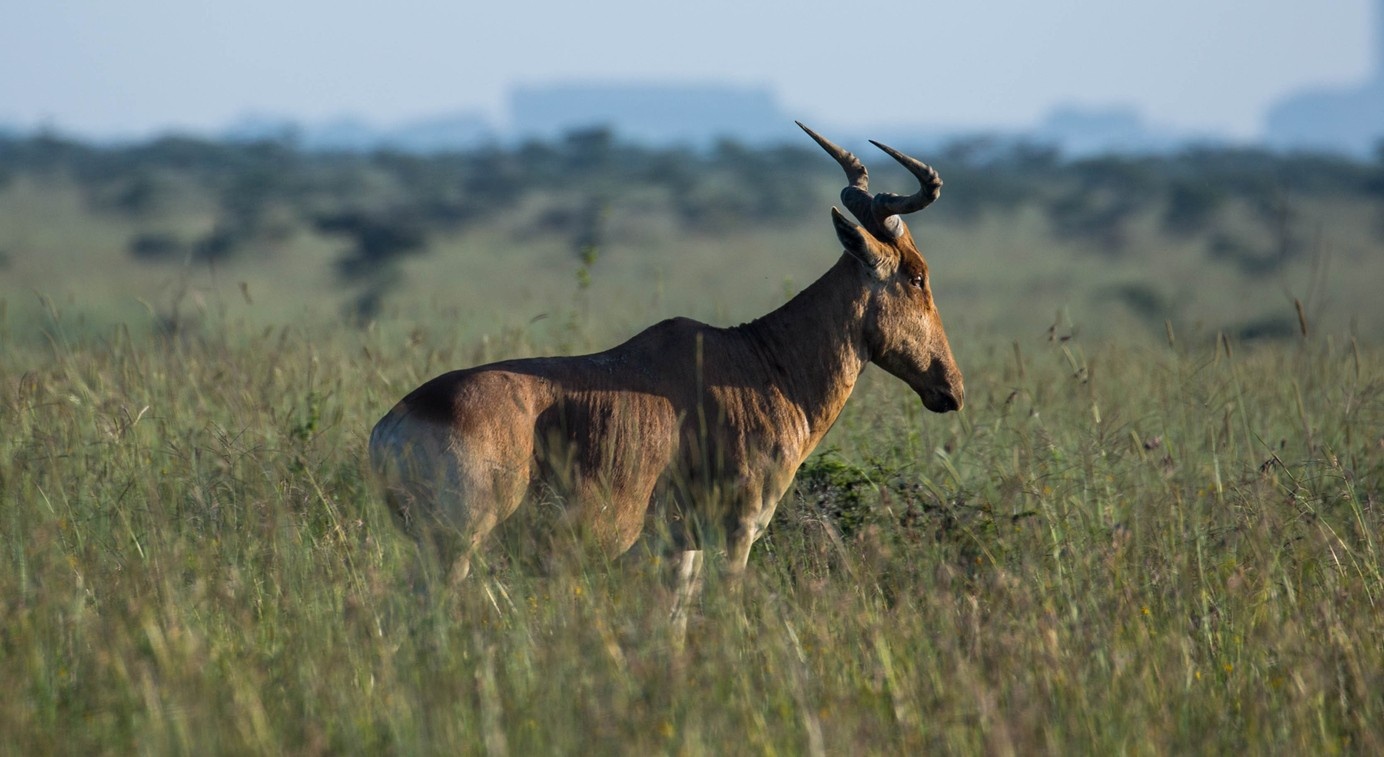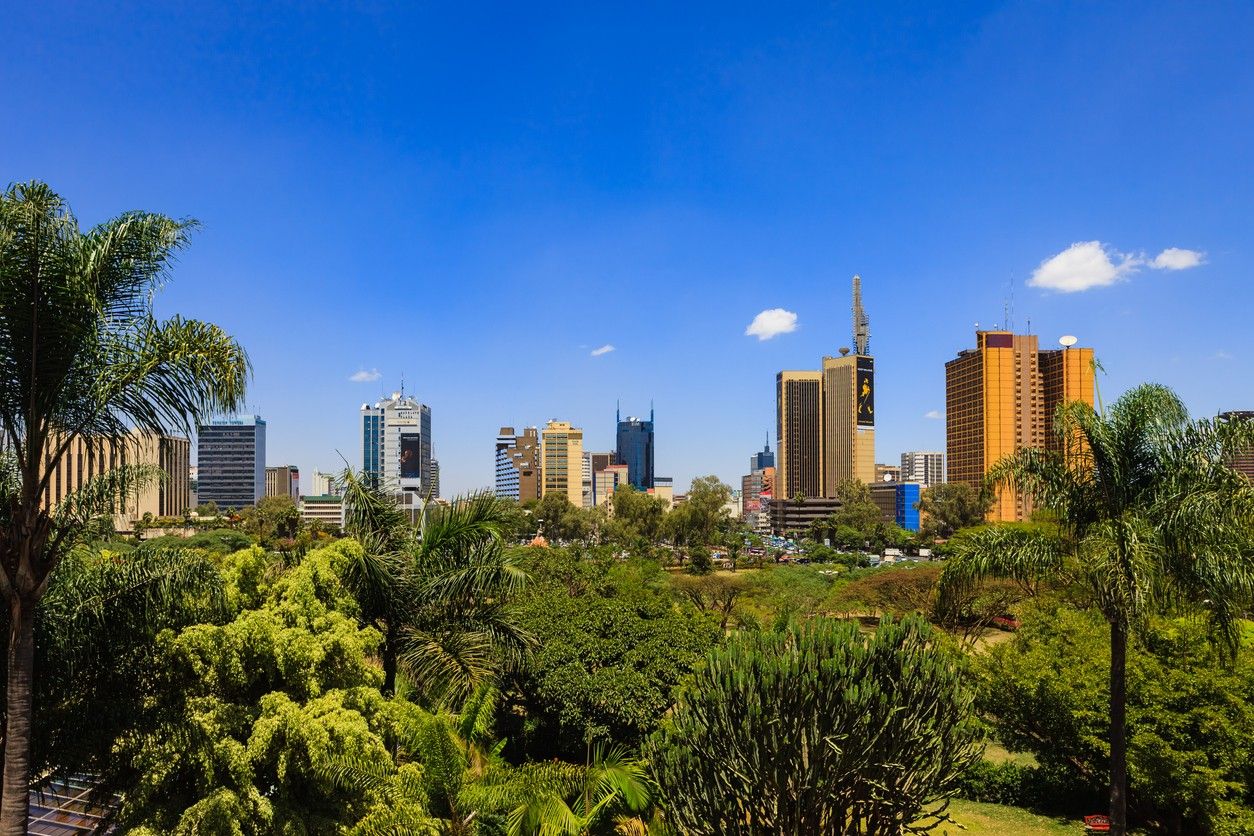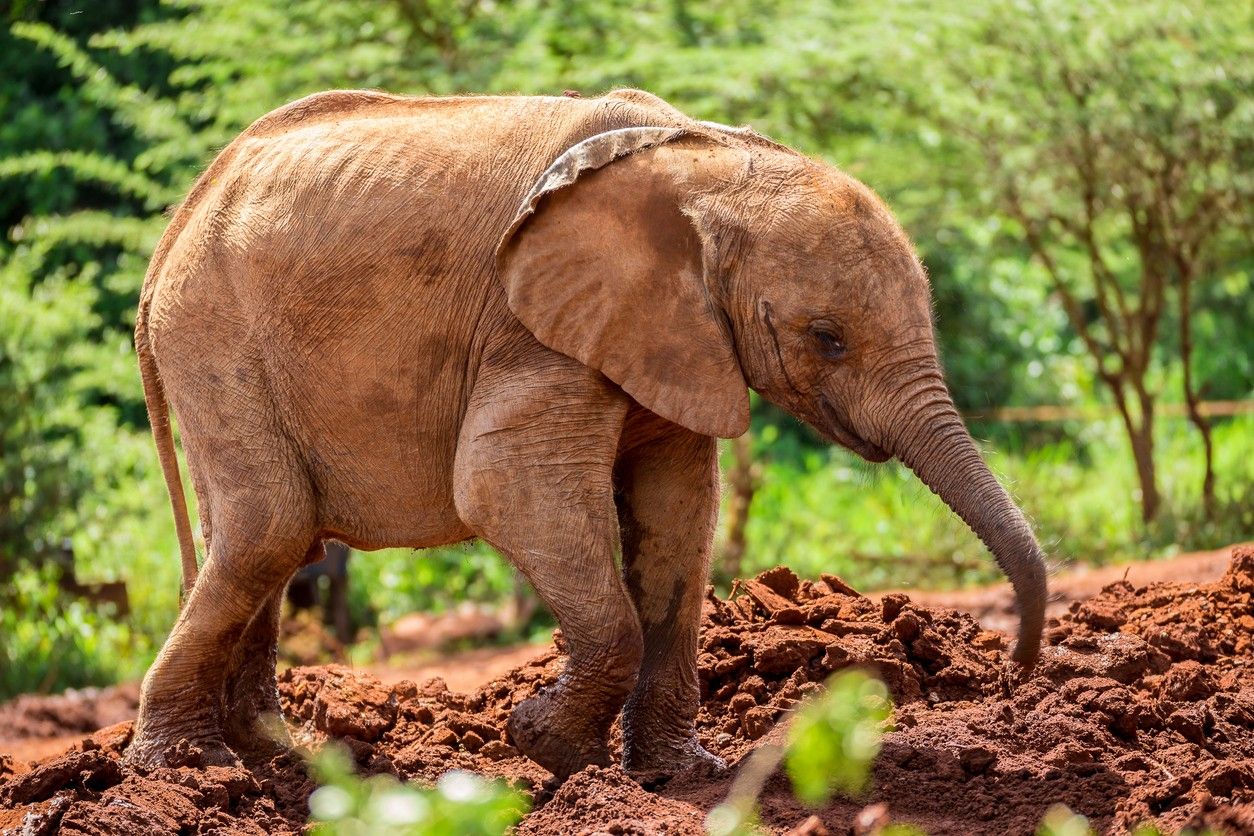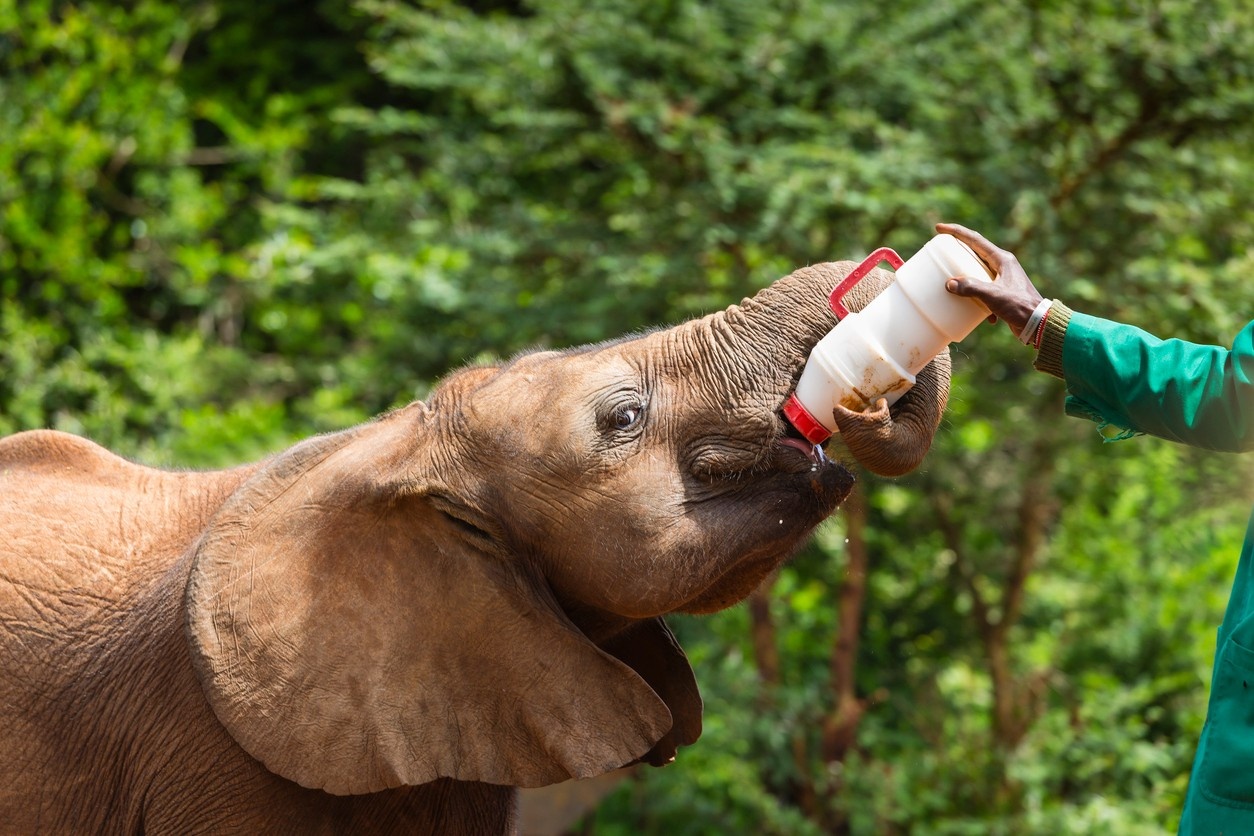Nairobi National Park is an extraordinary safari destination situated within the precincts of Kenya's capital city. Spanning over 117 square kilometres, this park offers an unparalleled opportunity to witness Africa's iconic wildlife against the backdrop of Nairobi's illustrious skyline. As one of the world's few city-based national parks, it provides a unique and captivating experience for visitors from near and far. Established in 1946, Nairobi National Park serves as a vital sanctuary for a diverse array of species, including the renowned Big Five – lions, leopards, rhinoceros, elephants, and Cape buffalo. The park's diverse habitats, ranging from open grasslands to acacia woodlands, support a rich tapestry of flora and fauna, making it a true haven for nature enthusiasts and wildlife photographers alike. A visit to Nairobi National Park is an adventure like no other. Imagine driving through the park's winding roads, encountering herds of zebras, gazelles, and wildebeests grazing peacefully on the savannah. The park's proximity to the city adds an extra layer of excitement, with the iconic skyscrapers and bustling streets of Nairobi forming a unique backdrop to your safari experience.
Exploring Nairobi National Park's Diverse Habitats
Nairobi National Park boasts an impressive array of habitats, each teeming with its unique flora and fauna. Exploring these diverse landscapes is a true highlight for any visitor, offering a chance to witness the park's remarkable biodiversity up close. From the vast open grasslands to the lush riverine forests, every habitat offers its distinct sights, sounds, and wildlife encounters. With a little preparation and guidance, visitors can navigate these various ecosystems and unlock the secrets of Nairobi National Park's natural wonders.
The Grassy Plains
The sweeping grassy plains are perhaps the most iconic habitat within Nairobi National Park. These vast, open areas are home to a diverse array of grazing herbivores, including the graceful Thomson's gazelle, the stately eland, and the striking impala. The grassy plains also provide prime viewing opportunities for spotting the park's predators, such as lions, cheetahs, and hyenas. These skilled hunters often lie in wait, camouflaged amidst the tall grasses, ready to ambush their prey with lightning-fast strikes. Guided game drives or self-drive safaris offer the best chances of encountering these majestic predators in action, stalking their prey or feasting on a fresh kill. When exploring the grassy plains, it's essential to follow the designated safari routes and heed the advice of your guide or ranger. Remain vigilant for any wildlife sightings, and be prepared to stop and observe from a safe distance, without disturbing the animals or their natural behaviours. Binoculars and long camera lenses are essential for capturing the action from afar.
The Acacia Woodlands
The park's acacia woodlands offer a different perspective, with their twisted branches and thorny trunks providing shelter to an array of bird species and smaller mammals. These woodlands are a prime habitat for leopards, one of the most elusive members of the Big Five. Keep your eyes peeled for these stealthy felines lounging on tree branches or slinking through the undergrowth, their distinctive rosette patterns blending seamlessly with the dappled shade. In the acacia woodlands, visitors may also encounter troops of baboons foraging for food or resting in the shade, their social interactions and playful antics providing endless entertainment. The woodlands are also home to the endearing dik-dik, one of the smallest antelopes in the world, as well as a variety of colourful bird species, including the vibrant lilac-breasted roller and the iconic African fish eagle, soaring majestically overhead. Guided walking safaris through these woodlands offer a closer look at the intricate details of this habitat, from the intricate bark patterns to the delicate plant life thriving beneath the canopy. Your guide will help you identify the various bird calls, animal tracks, and the fascinating adaptations that allow these species to thrive in this unique ecosystem.
The Riverine Forests
The lush riverine forests that line the banks of the Mbagathi River offer a welcome respite from the sun's scorching rays. These verdant corridors are a haven for a diverse array of birdlife, with species such as the African paradise flycatcher and the malachite kingfisher darting among the branches, their vibrant plumage a sight to behold. The riverine forests are also home to the endangered black rhinoceros, one of the park's most iconic and critically protected species. Visitors may catch a glimpse of these magnificent creatures wallowing in the cool waters or grazing on the abundant vegetation that thrives along the riverbanks. With patience and a keen eye, you may even witness the awe-inspiring sight of a mother rhino leading her calf through the forest, a poignant reminder of the importance of conservation efforts.
Hippos, another iconic African species, can often be spotted in the rivers and pools, their massive bodies partially submerged as they bask in the water, their loud grunts and snorts echoing through the forest. Guided boat safaris along the Mbagathi River offer a unique perspective on these aquatic giants and the rich birdlife that inhabits the riverine forests. When exploring the riverine forests, it's essential to remain on designated trails and follow the guidance of your ranger or guide. These areas can be dense and potentially hazardous, as they are home to numerous species, including the elusive leopard and the formidable Cape buffalo. However, with proper precautions and an experienced guide, these lush corridors offer a truly immersive and rewarding wildlife experience.
Nairobi National Park's Iconic Wildlife
Nairobi National Park is a true haven for wildlife enthusiasts, offering the rare opportunity to observe some of Africa's most iconic species in their natural habitat. From the majestic Big Five to the graceful antelopes and the colourful array of birds, the park's diverse fauna is a sight to behold. With a keen eye and a little guidance, visitors can unlock the secrets of this urban wilderness and create unforgettable wildlife encounters.
The Big Five
The Big Five – lions, leopards, rhinoceros, elephants, and Cape buffalo – are undoubtedly the stars of the show in Nairobi National Park. These iconic African species draw visitors from around the world, each offering a unique and awe-inspiring experience.
Lions — They can be seen lounging in the shade or prowling through the grasslands in search of prey. Keep your eyes peeled for the distinctive manes of the males, or the sleek, powerful bodies of the lionesses as they hunt in coordinated prides. With a little patience and the guidance of an experienced ranger, you may witness the thrilling spectacle of a lion pride on the hunt or feasting on a fresh kill.
Leopards — They are elusive and stealthy and are a true highlight of any Nairobi National Park safari. These magnificent cats are masters of camouflage, often spotted lounging on tree branches or slinking through the undergrowth, their distinctive rosette patterns blending seamlessly with their surroundings. Guided walking safaris offer the best chance of encountering these elusive felines, as your ranger's expert tracking skills lead you to their secret haunts.
Rhinoceros — The park's rhino population, comprising both black and white species, is a testament to the ongoing conservation efforts in the area. These prehistoric-looking giants are a sight to behold, their armour-like skin and imposing horns commanding respect and admiration. Visitors may catch a glimpse of them wallowing in mud pools or grazing on the lush vegetation, their calves closely guarded by their protective mothers.
Elephants — They are the largest land mammals on the planet, and are a remarkable sight as they amble through the park in family herds, their majestic presence leaving a lasting impression. Watch in awe as these gentle giants use their powerful trunks to uproot trees and shrubs, their deep rumbles and trumpets echoing across the savannah.
Cape buffalo — With their formidable horns and imposing stature, they are a force to be reckoned with and an essential part of the park's ecosystem. These massive bovines often gather in large herds, grazing on the open plains or seeking respite in the shade of the acacia woodlands. Approach them with caution and under the guidance of a ranger, as they are known for their unpredictable and aggressive behaviour when threatened.
Beyond the Big Five
While the Big Five are undoubtedly the headline acts, Nairobi National Park is home to a diverse array of other wildlife that will captivate and delight visitors. Graceful antelope species, such as the Thomson's gazelle, the stately eland, and the striking impala, can be seen grazing on the open plains or darting through the bushes, their agility and beauty captivating visitors. The park's avian residents add a vibrant splash of colour and life to the landscape. From the iconic African fish eagle soaring overhead to the colourful lilac-breasted roller and the majestic secretary bird, the park's diverse birdlife offers endless opportunities for birdwatchers and photographers alike. Guided bird walks can help you identify and appreciate the unique characteristics and behaviours of these feathered marvels. Other fascinating residents of the park include troops of baboons, foraging and socialising in the acacia woodlands, and the endearing dik-dik, one of the smallest antelopes in the world, darting through the undergrowth with their distinctive zebra-like markings.
Nairobi National Park's Conservation Efforts
Nairobi National Park plays a pivotal role in conservation efforts, serving as a sanctuary for endangered species and promoting environmental awareness. The park's dedicated team of rangers, conservationists, and scientists work tirelessly to protect the delicate ecosystems and ensure the survival of the resident wildlife. Through a combination of innovative strategies, community engagement, and international collaboration, Nairobi National Park has become a shining example of successful conservation efforts in action.
Protecting the Critically Endangered Black Rhinoceros
One of the park's most significant conservation successes is the preservation of the critically endangered black rhinoceros population. Through rigorous anti-poaching measures, habitat protection initiatives, and international cooperation, the park has been able to safeguard these magnificent creatures from the threat of extinction. The park's dedicated rhino protection unit employs cutting-edge technology, such as remote sensor cameras and GPS tracking devices, to monitor the movements and well-being of the rhino population. Highly trained rangers conduct regular patrols, both on foot and by vehicle, to deter poachers and ensure the safety of these endangered giants. In addition to on-the-ground efforts, Nairobi National Park works closely with international organisations and local communities to combat the illegal wildlife trade and raise awareness about the importance of rhino conservation. Education programs and community outreach initiatives aim to foster a sense of stewardship and encourage sustainable practices that benefit both wildlife and human populations.
Elephant Conservation and Habitat Management
The park's elephant population, once under severe pressure from poaching and habitat loss, has also been the focus of intensive conservation efforts. By establishing secure corridors and maintaining strict regulations, the park has provided a haven for these gentle giants to thrive. Ongoing habitat management strategies, such as controlled burning and vegetation management, ensure that the park's ecosystems remain healthy and provide ample food and water resources for the elephant herds. Park rangers also work to mitigate human-elephant conflicts in the surrounding areas, implementing measures to deter elephants from encroaching on human settlements and agricultural lands. Furthermore, Nairobi National Park collaborates with international organisations and research institutions to study the behaviour, migration patterns, and genetic diversity of its elephant population. This valuable data informs conservation strategies and helps ensure the long-term survival and well-being of these iconic animals.
Environmental Education and Community Engagement
Nairobi National Park serves as an important educational hub, raising awareness about the importance of environmental conservation and sustainable practices. The park's outreach programs and guided tours aim to inspire visitors, particularly the younger generation, to become advocates for wildlife protection and environmental stewardship. Through interactive exhibits, educational talks, and immersive experiences, visitors learn about the park's diverse ecosystems, the threats facing wildlife, and the critical role that each individual can play in promoting conservation efforts. These educational initiatives are designed to foster a deeper appreciation for the natural world and encourage responsible tourism practices. Nairobi National Park collaborates with local schools and communities, organising outreach programs and workshops that promote environmental awareness and sustainable living practices. By engaging with the communities surrounding the park, the conservation team aims to build a sense of ownership and responsibility for the protection of this natural treasure.
Sustainable Tourism and Responsible Practices
Nairobi National Park recognises the importance of promoting sustainable tourism practices to minimise the impact on the park's delicate ecosystems. Visitors are encouraged to adopt responsible behaviours, such as minimising waste, respecting wildlife, and supporting local communities. The park's eco-friendly accommodations and tour operators prioritise sustainable practices, including the use of solar power, rainwater harvesting, and waste management systems. Additionally, visitors can participate in conservation-focused activities, such as tree-planting initiatives or beach clean-ups, further contributing to the preservation of the park's natural resources.
Through a multi-faceted approach that combines scientific research, community engagement, and sustainable tourism practices, Nairobi National Park's conservation efforts serve as a beacon of hope for the future of Kenya's wildlife and ecosystems. By fostering a deep appreciation and respect for the natural world, the park aims to inspire a global movement towards environmental stewardship, ensuring that this urban wilderness remains a source of wonder and inspiration for generations to come.
Visiting Nairobi National Park — A Practical Guide
Planning a visit to Nairobi National Park can be an exciting yet daunting task, especially for first-time visitors. To ensure a seamless and unforgettable experience, it's essential to have a practical guide that covers all the essential aspects of your trip, from when to visit to what to expect during your safari.
Best Time to Visit Nairobi National Park — The dry seasons, from June to October and January to March, are considered the best times to visit Nairobi National Park. During these periods, the vegetation is less dense, making it easier to spot wildlife congregating around water sources. The cooler temperatures also make for more comfortable game drives.
How to Get There — Nairobi National Park is conveniently located within the city limits of Nairobi, making it easily accessible by public and private transportation. Visitors can take a taxi or use ride-sharing services to reach the park's main entrance, which is approximately 7 kilometres from the city centre.
Park Entry Fees and Permits — To enter Nairobi National Park, visitors must purchase an entry permit. The fees vary depending on the visitor's nationality and age. It's advisable to check the park's website or inquire with local tour operators for the latest entry fee information.
Choosing the Right Safari Experience — Nairobi National Park offers a variety of safari experiences to suit different preferences and budgets. Self-drive safaris allow visitors to explore the park at their own pace, while guided tours, led by experienced rangers, provide in-depth knowledge and insights into the park's wildlife and ecosystems. For those seeking a more immersive experience, overnight stays at the park's lodges or tented camps are available. These accommodations offer the opportunity to witness the park's nocturnal activities and wake up to the sounds of the African wilderness.
Essential Safari Gear — To make the most of your Nairobi National Park experience, it's important to come prepared with the right gear. Binoculars, camera equipment (including telephoto lenses for wildlife photography), sun protection (hats, sunglasses, and sunscreen), comfortable walking shoes or boots, and plenty of water are essential items to pack.
Safety Considerations — While Nairobi National Park is a well-managed and secure destination, it's crucial to follow safety guidelines and heed the advice of park rangers. Visitors should remain in their vehicles at all times during game drives and refrain from approaching or feeding the wildlife. It's also advisable to carry a map or GPS device to avoid getting lost within the park's vast expanse.
Responsible Tourism — Nairobi National Park is committed to promoting responsible tourism practices, ensuring the preservation of its natural resources and the well-being of its resident wildlife.
Beyond Nairobi National Park — Exploring the Surrounding Attractions
While Nairobi National Park is undoubtedly the crown jewel of the region, the surrounding areas offer a wealth of additional attractions and experiences for visitors to explore. From bustling marketplaces to cultural heritage sites, these destinations provide a deeper understanding of Kenya's rich history and vibrant traditions.
The Nairobi City Tour
No visit to the Kenyan capital would be complete without a guided tour of Nairobi's iconic landmarks and bustling street scenes. Embark on a journey through the heart of this vibrant city, where modern skyscrapers coexist with historic sites and bustling markets, offering a captivating blend of urban energy and cultural richness. One of the highlights of any Nairobi city tour is the Maasai Markets, a vibrant hub of local artisans and craftspeople. Here, visitors can immerse themselves in a kaleidoscope of colours, textures, and traditions as they browse through stalls brimming with handcrafted jewellery, intricate woodcarvings, and colourful textiles. Skilled vendors eagerly share the stories behind their wares, offering a glimpse into the rich cultural heritage of Kenya's Maasai community. Be prepared to haggle and barter, as this is an integral part of the market experience, and don't miss the opportunity to witness traditional beadwork demonstrations or purchase unique souvenirs to take home.
Another must-visit destination is the Karen Blixen Museum, once the home of the famous author of "Out of Africa." Step back in time as you explore the well-preserved colonial farmhouse and its lush surroundings, where Blixen penned her renowned works and lived among the local Kikuyu people. Guided tours bring the site's history to life, offering insights into the author's life, her relationships with the local community, and the challenges she faced as a pioneering farmer and writer during the colonial era. Visitors can also stroll through the beautifully manicured gardens, which served as inspiration for many of Blixen's vivid descriptions of Kenyan landscapes.
Nairobi's Museums and Cultural Centres
For those seeking a deeper understanding of Kenya's cultural heritage, Nairobi boasts several world-class museums and cultural centres that offer immersive experiences and invaluable insights into the country's rich diversity. The National Museum of Kenya is a must-visit, featuring an impressive collection of artefacts, fossils, and exhibits showcasing the country's rich history and diverse ethnic groups. From ancient rock art and prehistoric tools to traditional handicrafts and ceremonial masks, visitors can explore the evolution of Kenya's cultures and traditions through interactive displays and knowledgeable guides. Don't miss the opportunity to witness live demonstrations of traditional crafts, such as basket weaving or pottery making, and gain a deeper appreciation for the skills and artistry passed down through generations.
The Bomas of Kenya, a traditional village complex, offers visitors a unique opportunity to experience the vibrant cultures of various Kenyan communities through dance, music, and traditional architecture. Guided tours take visitors on a journey through the intricate homesteads, each representing a different ethnic group, where they can witness live performances of traditional dances, observe skilled artisans at work, and even participate in cultural activities such as grinding maize or trying their hand at traditional games. The complex also hosts occasional cultural festivals and events, providing an immersive experience that celebrates the diversity of Kenya's rich cultural tapestry.
Giraffe Centre and Elephant Orphanage
Animal lovers will delight in the opportunity to interact with some of Kenya's most iconic creatures at the Giraffe Centre and the Sheldrick Elephant Orphanage, both located within easy reach of Nairobi. At the Giraffe Centre, visitors can come face-to-face with these gentle giants and even hand-feed them from a raised observation platform. Knowledgeable guides provide insights into the behaviour, conservation efforts, and unique adaptations of these towering creatures, fostering a deep appreciation for their majesty. Visitors can also explore the centre's nature trails, which wind through a lush sanctuary where giraffes roam freely, offering opportunities for up-close encounters and memorable photo opportunities.
The Sheldrick Elephant Orphanage, located in the nearby Nairobi National Park, offers a heartwarming experience as visitors witness the care and rehabilitation of orphaned baby elephants. Watch in awe as these adorable calves are bottle-fed, played, and nurtured by their dedicated keepers, learning essential survival skills before being reintroduced into the wild. Educational talks and behind-the-scenes tours provide a deeper understanding of the challenges facing elephant populations, such as poaching and habitat loss, and the critical work being done to protect these magnificent animals. Visitors can even adopt an orphaned elephant and contribute to their ongoing care and eventual release into a protected area.
Nairobi National Park Safari Walk
For those seeking an up-close and immersive wildlife experience, the Nairobi National Park Safari Walk offers a unique opportunity to explore the park on foot. Guided by experienced rangers, visitors can embark on a guided hike through the park's trails, encountering various species of animals and plants along the way, and gaining a deeper appreciation for the park's delicate ecosystems. Keep your camera ready, as you may spot a variety of smaller creatures, such as dik-diks, mongooses, or colourful bird species, that are often overlooked during vehicle safaris. The safari walk offers a chance to witness wildlife in their natural environment, without the barrier of a vehicle. With patience and careful observation, you may catch a glimpse of antelopes grazing, monkeys foraging in the trees, or even a big cat lounging in the shade. Your ranger's guidance ensures a safe and respectful experience, allowing you to appreciate the park's biodiversity while minimising disturbance to the resident wildlife. Be prepared for a moderate level of physical activity and bring sturdy hiking shoes, sun protection, and plenty of water for this unforgettable adventure.
Day Trips and Excursions
The areas surrounding Nairobi National Park offer a wealth of day trips and excursion opportunities for visitors seeking to explore further afield and immerse themselves in Kenya's natural and cultural wonders. With a diverse range of destinations to choose from, these excursions provide a chance to experience the country's rich heritage and stunning landscapes beyond the boundaries of the park. The Great Rift Valley, a geological marvel stretching across East Africa, is a popular destination for day trips from Nairobi. Visitors can marvel at the stunning landscapes of this vast valley, dotted with lakes, extinct volcanoes, and dramatic escarpments. Guided tours offer the opportunity to visit local Maasai villages, where you can learn about their traditional way of life, witness vibrant cultural displays, and perhaps even sample their unique cuisine. Other highlights include exploring vibrant markets, witnessing the remarkable wildlife that thrives in this unique ecosystem, and taking in panoramic views of the valley from scenic viewpoints.
For those seeking an outdoor adventure, the nearby Ol Donyo Sabuk National Park and the Ngong Hills offer hiking and nature walks amidst breathtaking scenery. Experienced guides lead visitors along scenic trails, pointing out unique flora and fauna, such as the towering Doum palm trees or the elusive Colobus monkeys, and sharing insights into the region's rich cultural and geological history. Longer hikes can take you to the summit of Ol Donyo Sabuk, offering panoramic vistas of the surrounding landscapes and a true sense of accomplishment. Other popular day trip destinations include the historic town of Machakos, known for its traditional crafts, vibrant markets, and colonial architecture. Visitors can wander through the narrow streets, browse local handicrafts, and perhaps even participate in a cooking class to learn the art of preparing traditional Kenyan dishes. The Kiambethu Tea Farm, nestled in the lush highlands outside Nairobi, offers a unique opportunity to learn about the tea-making process and sample some of Kenya's finest brews amidst lush tea plantations. Guided tours take visitors through the various stages of tea production, from harvesting to processing, and provide insights into the history and cultural significance of tea in Kenyan society.
Related articles

Let us know you agree to cookies
We use marketing, analytical and functional cookies as well as similar technologies to give you the best experience. Third parties, including social media platforms, often place tracking cookies on our site to show you personalised adverts outside of our website.
We store your cookie preferences for two years and you can edit your preferences via ‘manage cookies’ or through the cookie policy at the bottom of every page. For more information, please see our cookie policy.
